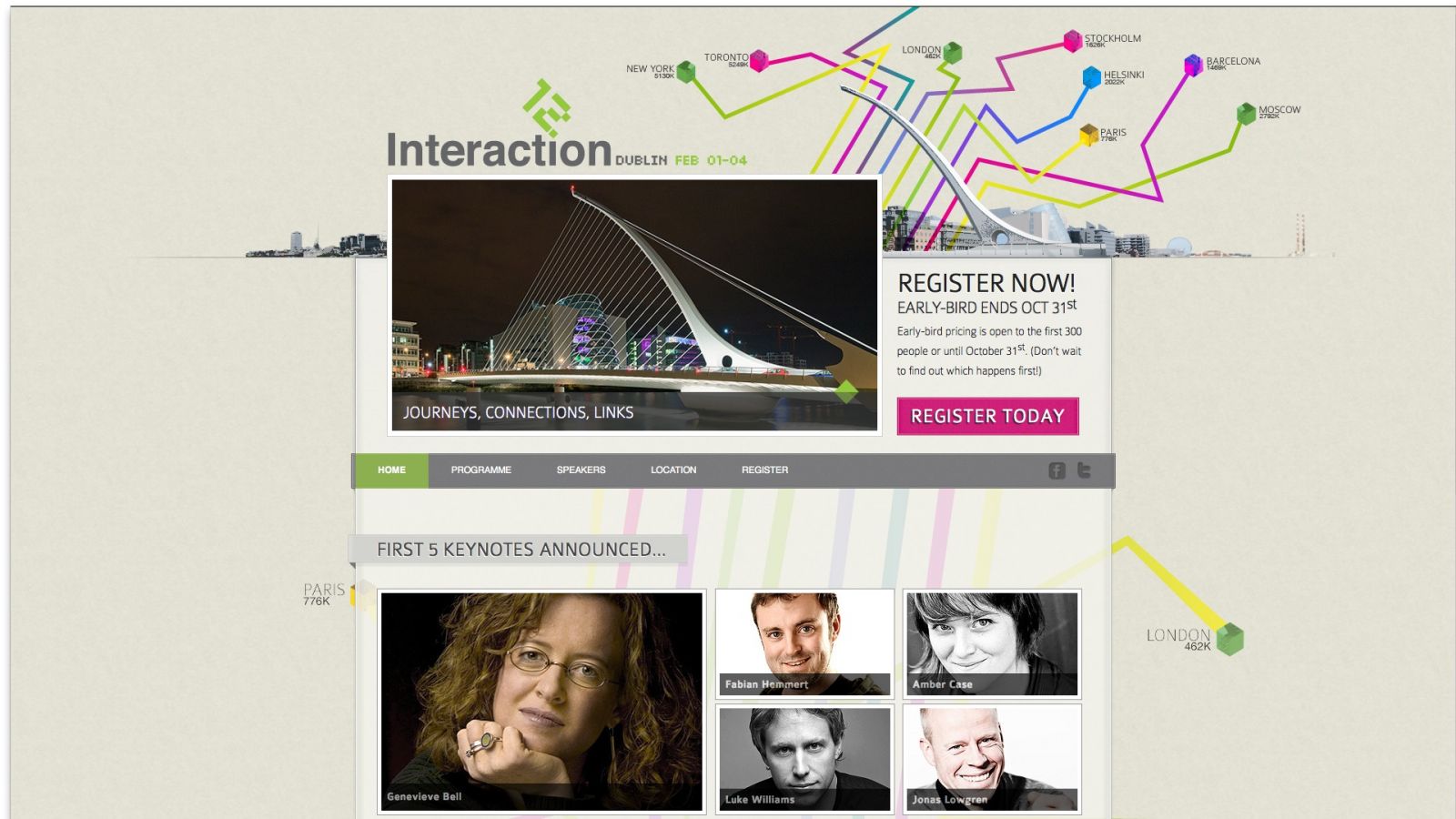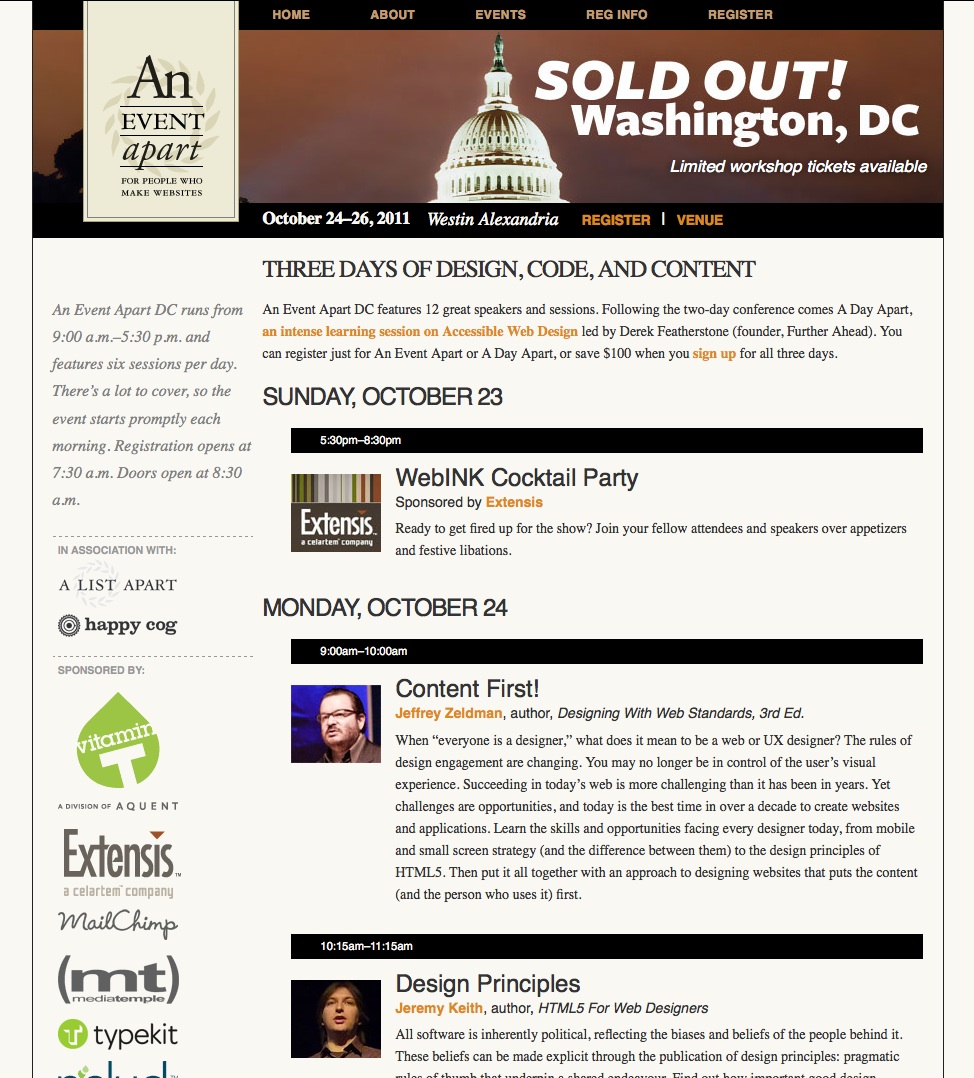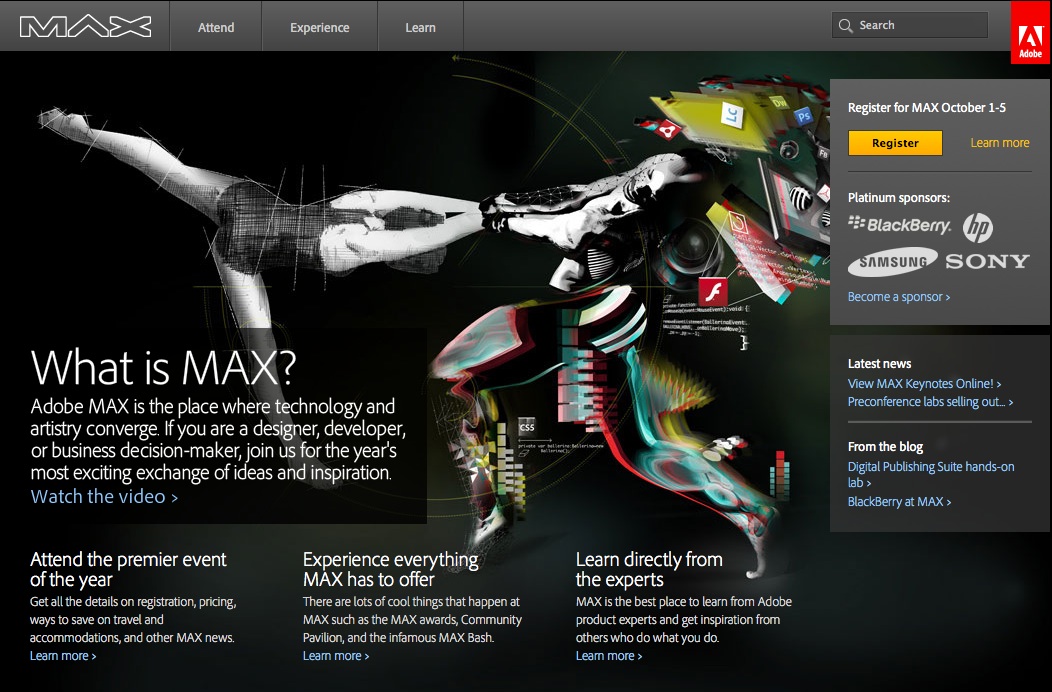7 ways web conferences suck (and how to fix them)
Robert Hoekman Jr has been speaking at web conferences for six years now. Here he analyses seven things that are wrong with such events and comes up with a few ideas about how to fix them
There are two sides to every conference: one filled with metal folding chairs and hotel food, the other at the front of the room, behind the lectern. The latter includes free flights, paid hotel stays in glamorous locales, cushy dinners with industry experts, and the admiration and attention of a few hundred people who hope that you’ll rock their worlds.
For the past six years, I’ve been on the side with the lectern. And as much as I’ve enjoyed its many privileges, what happens on that side has a big impact on the side with the folding chairs.
There are many positive things to say about industry conferences; the camaraderie and networking opportunities alone are worth the price of admission. But everything can be improved, and transparency about the problems with conferences is the only way we’ll challenge them to rise up.
Here is a list of things you should know before you choose your next conference, followed by a few ideas about how to fix them.
1. Big names over big content
Much of the time, the subject of a speaker’s presentation isn’t discussed until after the invitation to speak is accepted. Hence, speakers are rarely chosen based on the merits of a proposed talk, but rather on reputation. While this isn’t always a bad thing, it does little to ensure the speaker has something of value to deliver to the event’s specific audience. Exceptions to this include SXSW, IA Summit, and Interaction (run by the IxDA), all of which are curated in part by a judging panel.

2. No way to "know your audience"
Few conferences supply information to speakers about their attendees, leaving speakers to guess. A notable exception is An Event Apart, which sends its speakers a concise and informative description of the kind of person who most typically attends the event.
3. Great speakers = crappy takeaways
Conferences often require speakers to turn in their slide decks prior to the start of the event so they can be posted to a hidden website or packaged up and put on DVDs to be given to attendees. But good presentation design practices tell us that our slides should exist strictly for visual support. As a result, they’re all but meaningless without us standing next to them with our loud mouths agape. In other words, the most useful speakers often come with the least useful slides.
Get the Creative Bloq Newsletter
Daily design news, reviews, how-tos and more, as picked by the editors.
4. It don't pay the bills
Few conferences pay speakers enough to justify the time they must spend creating presentations and leaving the office for days on end (for many, this is time spent earning no income whatsoever). Most conferences pay nothing beyond covering the flight and hotel. (SXSW doesn’t even cover that; it’s 100% out-of-pocket.) Notable exceptions include UIE’s events, and An Event Apart, which pays a decent speaker fee and offers a couple of additional perks that address common speaker gripes.

5. No incentive
When speakers are paid, the nature of their agreements is such that as long as speakers show up and talk, they get paid. There is little motivation for speakers to do anything above or beyond their usual efforts (even more true when they’re not paid at all), and even a lousy speaker could take the stage at a few dozen events before word gets around enough for the invitations to stop rolling in.
The strongest exception to this was UIE’s Web App Summit (this likely extends to UIE’s other events as well), which, in addition to a flat fee, offered speakers a merit-based royalty rate: the better the evaluations, the more the speaker was paid. This provided clear and compelling motivation for speakers to deliver the best material they could.
6. Too many long talks
Most speakers are given a full hour or more to present their topics while the meat of most talks could, and arguably should, be conveyed in much less time. Many of the best presentations can be distilled down to one or two main ideas with a few supporting examples. Also, our attention spans and memory recall abilities fare much better when we’re given less information in less time. So why an hour? This is presumably due to financial constraints: it’s far more sensible to fly in a dozen speakers for hour-long talks than fly in three dozen to give shorter talks, even if those talks would be more effective.
7. No path to improve
Though many conferences ask attendees to complete speaker evaluation forms, which can help speakers improve for future events, almost no conference helps speakers improve their talks for the current event. The one exception I have encountered was the Adobe MAX conference, which offered its speakers a free session with a speaking coach during the event.

The solutions
Rather than relying on name and reputation, conference organisers could ask a larger number of speakers to submit abstracts and choose the final lineup based on their strength.
Rather than asking for slides, they could ask speakers to create handouts that summarise their talks.
Rather than building a full schedule of hour-long sessions, they could create space for short talks and invite local speakers to submit proposals for them. These talks could be focused on case studies, quick concepts, and how-to’s. Besides offering great value to attendees, this could create a path for lesser-known professionals to break into the speaking circuit so that stages are no longer dominated by the same names over and over again. So that merit becomes more important than marketing.
In doing this, rather than fly in a whole event’s worth of the usual suspects, organisers could invite fewer big names, pay them well enough to devote quality time to their talks, and work with them to improve those talks.
While I’m quite sure none of this is as simple as it seems, the argument stands. My point is not to convince, but to question.
As for those of you on the side with the folding chairs, use this information to decide which conference is most worthy of an imprint of your iPhone-stuffed back pocket.

Thank you for reading 5 articles this month* Join now for unlimited access
Enjoy your first month for just £1 / $1 / €1
*Read 5 free articles per month without a subscription

Join now for unlimited access
Try first month for just £1 / $1 / €1
The Creative Bloq team is made up of a group of design fans, and has changed and evolved since Creative Bloq began back in 2012. The current website team consists of eight full-time members of staff: Editor Georgia Coggan, Deputy Editor Rosie Hilder, Ecommerce Editor Beren Neale, Senior News Editor Daniel Piper, Editor, Digital Art and 3D Ian Dean, Tech Reviews Editor Erlingur Einarsson, Ecommerce Writer Beth Nicholls and Staff Writer Natalie Fear, as well as a roster of freelancers from around the world. The ImagineFX magazine team also pitch in, ensuring that content from leading digital art publication ImagineFX is represented on Creative Bloq.
